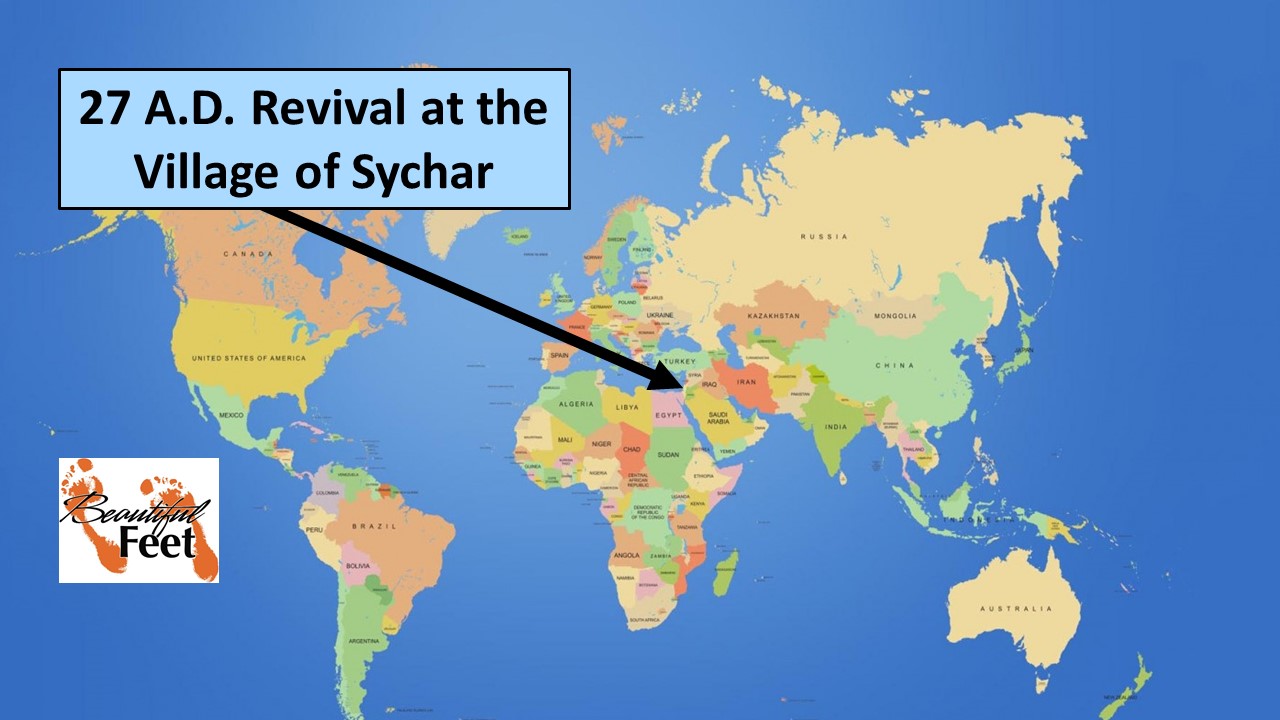

Introduction
This revival occurred in 27 A.D. in the Samaritan village of Sychar. Scriptures do not tell us how many from that village placed their faith in Jesus as the “Savior of the world,” but we know that “many” did (John 4:39-42).
If you are familiar with the Jewish–Samaritan conflict, you can skip down to the section titled: Focus on Revival, not Evangelism.
For those wanting background information on the relational conflict between Jews and Samaritans, we have added that information here.
Why the Relational Conflict between Jews and Samaritans
► Israel had been ruled by kings for approximately 434 years (1020 B.C. – 586 B.C.).
► The glory days of the nation occurred under King David and his son Solomon. Due to King Solomon’ horrific failures, the nation was divided after his death and went into decline, from which it never fully recovered.
Solomon built such shrines for all his foreign wives to use for burning incense and sacrificing to their gods. The Lord was very angry with Solomon, for his heart had turned away from the Lord, the God of Israel, who had appeared to him twice. He had warned Solomon specifically about worshiping other gods, but Solomon did not listen to the Lord’s command. So now the Lord said to him, “Since you have not kept my covenant and have disobeyed my decrees, I will surely tear the kingdom away from you and give it to one of your servants” (1 Kings 11:8-11).
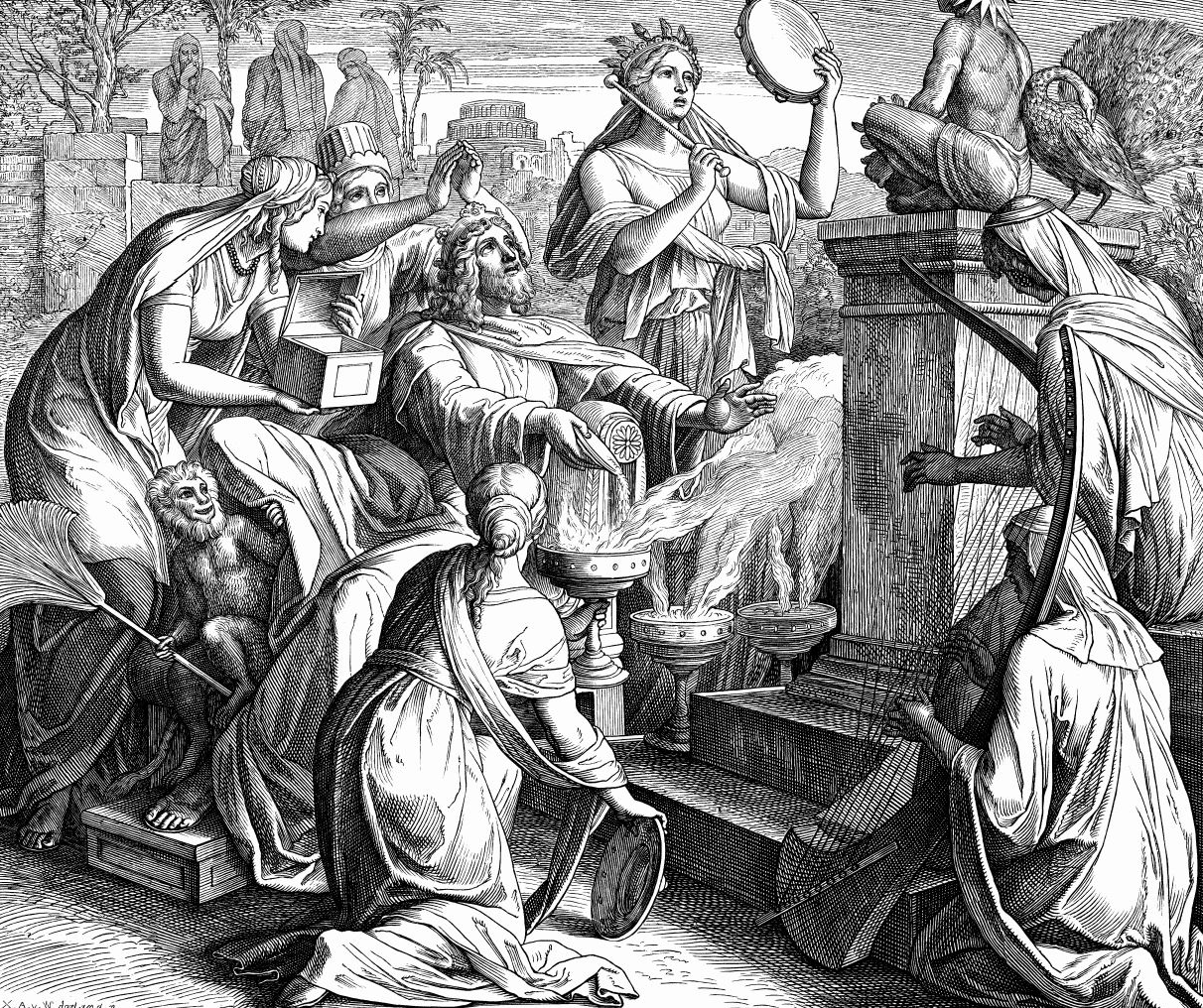
King Solomon worshiping an idol
It was in 931 B.C. that Solomon’s son, King Rehoboam, witnessed the division of the nation, with the Kingdom of Judah in the south having its central government in Jerusalem. The rival political Kingdom of Israel in the north eventually established its center of government in the town of Samaria.
► Out of the 42 kings (and 1 queen) that ruled over these two kingdoms, only 5 were considered godly, with a few more who were godly some of the time.
► Because of the idolatry and rebellion, God disciplined the northern Kingdom of Israel by allowing them to be overthrown by the Assyrians, who forcefully deported the majority of the people in 722 B.C.
► At the same time the Assyrians repopulated the area, previously known as the Kingdom of Israel, with foreigners. These people of foreign nationalities that were brought in, intermarried with the few poor remaining Israelites that were left behind by the Assyrians. The mixed offspring became known as the Samaritans (1 Chronicles 5:26;.2 Kings 15:29;.2 Kings 17:3-6;.2 Kings 17:24;.2 Kings 18:9-12).
► When the Samaritans didn’t demonstrate a fear of God, He sent lions among them to kill some of them. This led the Samaritans to ask for a priest to come and teach them how to worship the God of Israel. When the priest came and taught them Judaism, they still worshipped their former gods, while giving a measure of respect to the God of Israel (2 Kings 17:24-34). This syncretism of religions formed the religion—Samaritanism.
► The southern Kingdom of Judah, not learning from the northern Kingdom of Israel, was also disciplined by God, and this involved them being overthrown by the Babylonians and forcefully taken as slaves to Babylon in 587 B.C.
► After 70 years the Jews were permitted to return to Jerusalem and they began the reconstruction of the temple. The Samaritans wanted to participate, but because of their mixed religious practices, they were forbidden from assisting in the construction efforts.
► This led the Samaritans to build their own temple about 31 miles away, on Mt. Gerizim. This took place about 50 years after the temple in Jerusalem was rebuilt by Zerubbabel. According to the Samaritans, the temple they built on Mt. Gerizim was the holy place, and not the temple in Jerusalem. Thus, the Samaritan woman in the current story we are writing about said to Jesus:
So tell me, why is it that you Jews insist that Jerusalem is the only place of worship, while we Samaritans claim it is here at Mount Gerizim. where our ancestors worshiped” (John 4:20)?
► In Genesis 22:2, we read that Abraham was commanded by God to offer his son Isaac as a sacrifice on Mt. Moriah (Jerusalem). The Samaritans claimed that it was on Mt. Gerizim that Abraham was to offer his son as a sacrifice.
► The Jews destroyed the Samaritan temple around 128 B.C., with forces led by the Jewish high priest, John Hyrcanus.
► Most Jews considered the Samaritans ignorant, superstitious, and outside of God’s favor and mercy. Yet in John 4 we see Jesus including them in the Kingdom of God, if they would turn to Him in faith.
► There is still a Samaritan religious community today, made up of somewhere around 700 people. They are said to live in and around the Kiryat Luza, Nablus, and just outside Tel Aviv in the Holon district. They no longer have a temple, but they conduct worship ceremonies on Mt. Gerizim.
For further information on the conflict between Jews and Samaritans, look at our three other revival accounts where they were involved in conflicts with Jews recently returned from Babylon:
► 521 B.C. Revival Under Zerubbabel
► 458 B.C. Revival Under Ezra
► 432 B.C. Revival Under Nehemiah
New Testament References to Samaritans
Here are locations in the New Testament where Samaritans are mentioned.
► Jesus told his disciples not to visit any Samaritan city during their itinerant ministry (Matthew 10:5-6).
► James and John asked Jesus if they could call fire down from heaven on a Samaritan village (Luke 9:51-54).
► One of Jesus’ parables was The Parable of the Good Samaritan (Luke 10:30-37).
► When Jesus healed 10 lepers, only one of them, a Samaritan, returned to express gratitude to Jesus (Luke 17:11-19).
► Jesus asked a Samaritan woman for water—the story in this revival account (John 4:4-42).
► Evidence of the hostility between Jews and Samaritans can be seen when the Jewish leaders hurled the worst insult they could at Jesus, and that was by calling Him a Samaritan (John 8:48).
► Jesus told his disciples to focus on the Samaritans in their world evangelism efforts (Acts 1:8).
► A revival occurred in Samaria, leading to the apostles preaching in many Samaritan villages (Acts 8:1-25).
► There were churches planted throughout Samaria (Acts 9:31).
► Paul and Barnabas preached the Gospel in Samaria (Acts 15:2-3).
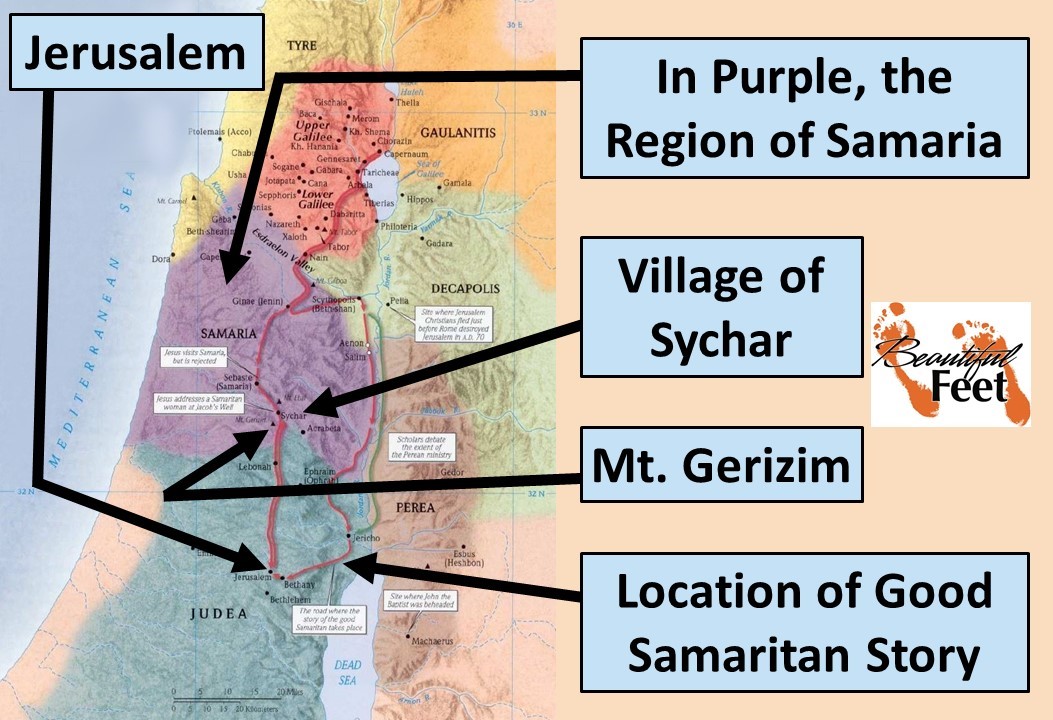
Focus on Revival, not Evangelism
We are not going to use this post to elaborate on the evangelistic approach that Jesus used. We want to focus primarily on the reviving that spread through the entire village of Sychar, and undoubtedly was the foundation to the spread of the Gospel throughout the region of Samaria, after the revival on the Day of Pentecost (Acts 2). You can read our account of that revival with this link: 30 A.D. Revival on the Day of Pentecost.
Non-Typical Revival
Note the non-typical differences found in this revival, as compared to many other revivals that have occurred through the ages:
► Though the Bible does not record any miracles being performed, other than the word of knowledge about the woman’s sinful lifestyle (John 4:19), we can be assured that there were miracles that occurred, because the Bible shows that Jesus’ model of ministry was preaching, healing, and casting out demons in every location he visited (Matthew 4:23-25; 9:35; Mark 1:38-39; Luke 4:40-41). That was also the pattern of ministry he taught to all his disciples (Matthew 10:5-8; Mark 3:14-15; Luke 9:1-2; Luke 10:1, 17).
► The only named evangelist in the New Testament was Phillip (Acts 21:8). And he, following Jesus’ pattern, showed us the only New Testament pattern for evangelism, and it involved preaching, healing, and casting out demons (Acts 8:5-8), and there isn’t a biblical reason why this same pattern for revival and evangelism shouldn’t be used today.
► The one who offered the message of hope was Jesus Himself.
► The message was first communicated to only one person, a woman. This was not just any woman; this was a woman who had been married 5 times and was currently living with a man to whom she was not married (John 4:17-18).
► That woman became a revivalist, by her immediately returning to the village and sharing the word of knowledge that Jesus communicated to her—that she had been married 5 times and was not honoring God with her current lifestyle (John 4:28-39).
He told me everything I ever did (John 4:39)!
Other non-Typical Aspects of this Revival Story
► No building was used. The revival commenced at the side of a water well (John 4:6-7).
► The only publicity was the evangelistic efforts of the woman herself (John 4:28-30).
► There wasn’t anyone anticipating this revival. There were no known prayer gatherings or other means used to bring about the reviving that occurred.
► We don’t see any destruction of idols.
► Jesus didn’t avoid the tough question. He specifically told the woman that the true form of worship originates with the Jews. Through that he clearly meant that Samaritanism was wrong. He also mentioned that the worship of the Jews was soon to go through a transition.
You Samaritans know very little about the one you worship, while we Jews know all about him, for salvation comes through the Jews (John 4:22).
Jesus replied, “Believe me, dear woman, the time is coming when it will no longer matter whether you worship the Father on this mountain or in Jerusalem” (John 4:21).
Evidence of Revival
► Many from that village believed because of that supernatural revelation of knowledge about the woman’s life (John 4:39).
► Jesus was invited to stay in that village, and during his two days of ministry there, many more believed due to other things He said to them (John 4:40-42).
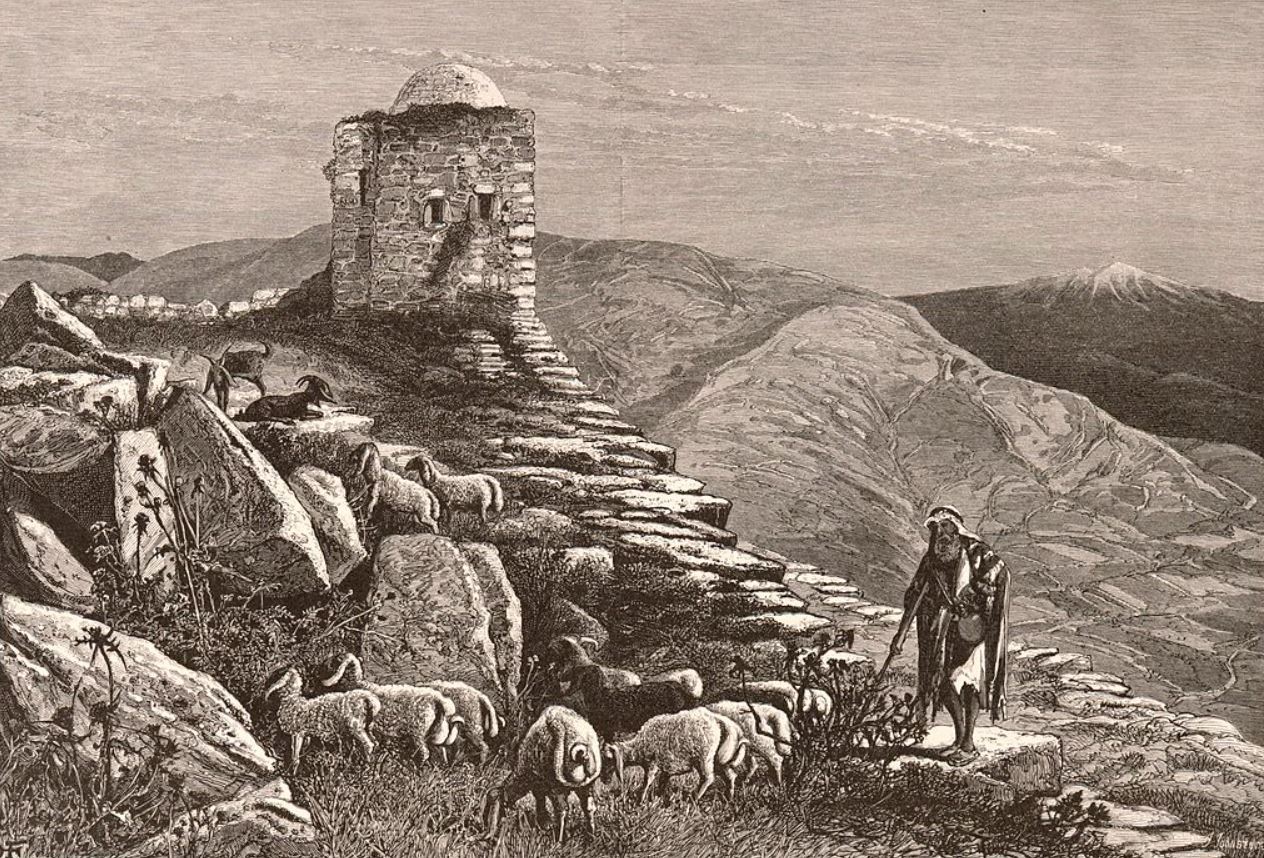
Ruins on Mt. Gerizim (1881-1884). In the distance on the right, snow covered peaks of Mt. Hermon.
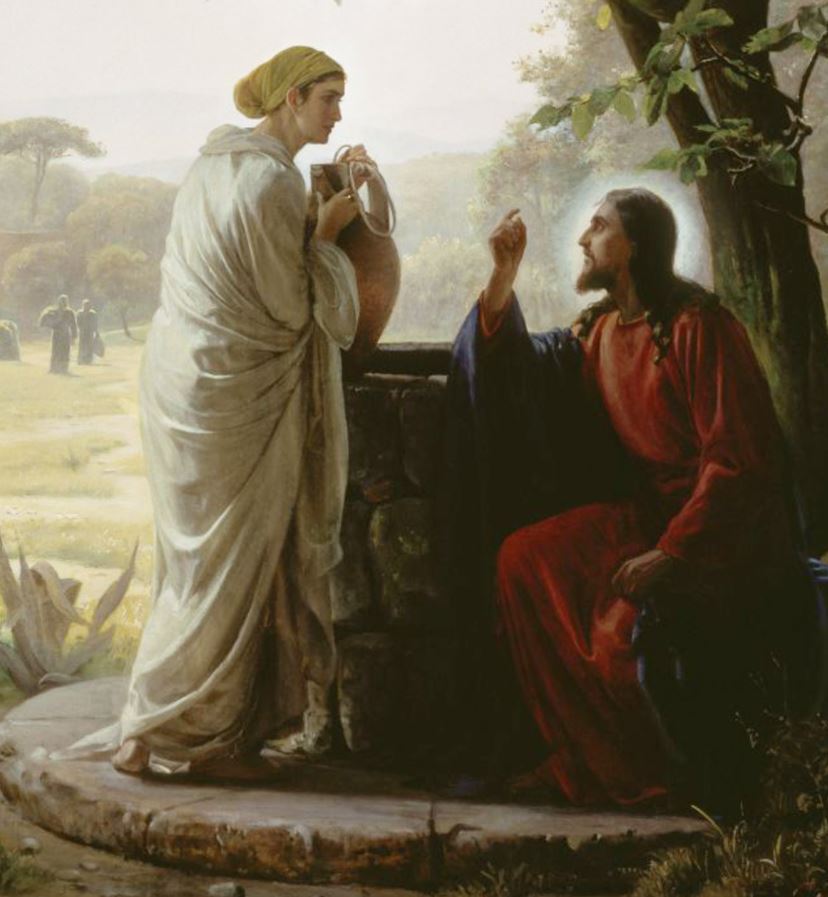
Jesus with the Samaritan woman from the village of Sychar
(John 4:1-42)
Unobserved Desire for Salvation
(the Harvest Was Ripe—John 4:35-38)
It is obvious that this was a divine season for harvest. The Bible doesn’t tell us everything that preceded this revival, but something had taken place which had given a hunger and thirst for the appearing of the Messiah.
► The woman and the people in the town were thirsty for God, but that desire for God wasn’t obviously recognizable (John 4:15; 4:28-30).
► The woman had spiritual questions; she had a conscious that was convicted (John 4:19-20).
► The people were religious. They were, though erroneously, seeking after God (John 4:20, 25).
Revival Lessons Learned
► God’s timing was perfect. Jesus knew the woman needed an encounter and He knew she was going to be used to spread the revival.
► It was an organic encounter, as nothing was planned or manipulated.
► There was no publicity. It was just a simple word, and many believed.
► This revival was undoubtedly instrumental in laying the foundation for the spreading of the Gospel throughout the region of Samaria following the day of Pentecost (Acts 8:1-25; Acts 9:31; Acts 15:2-3).
Return to List of Revival Stories
Chet & Phyllis Swearingen:
Office: (260) 920-8248
romans1015@outlook.com
Beautiful Feet
P.O. Box 915
Auburn, IN 46706

